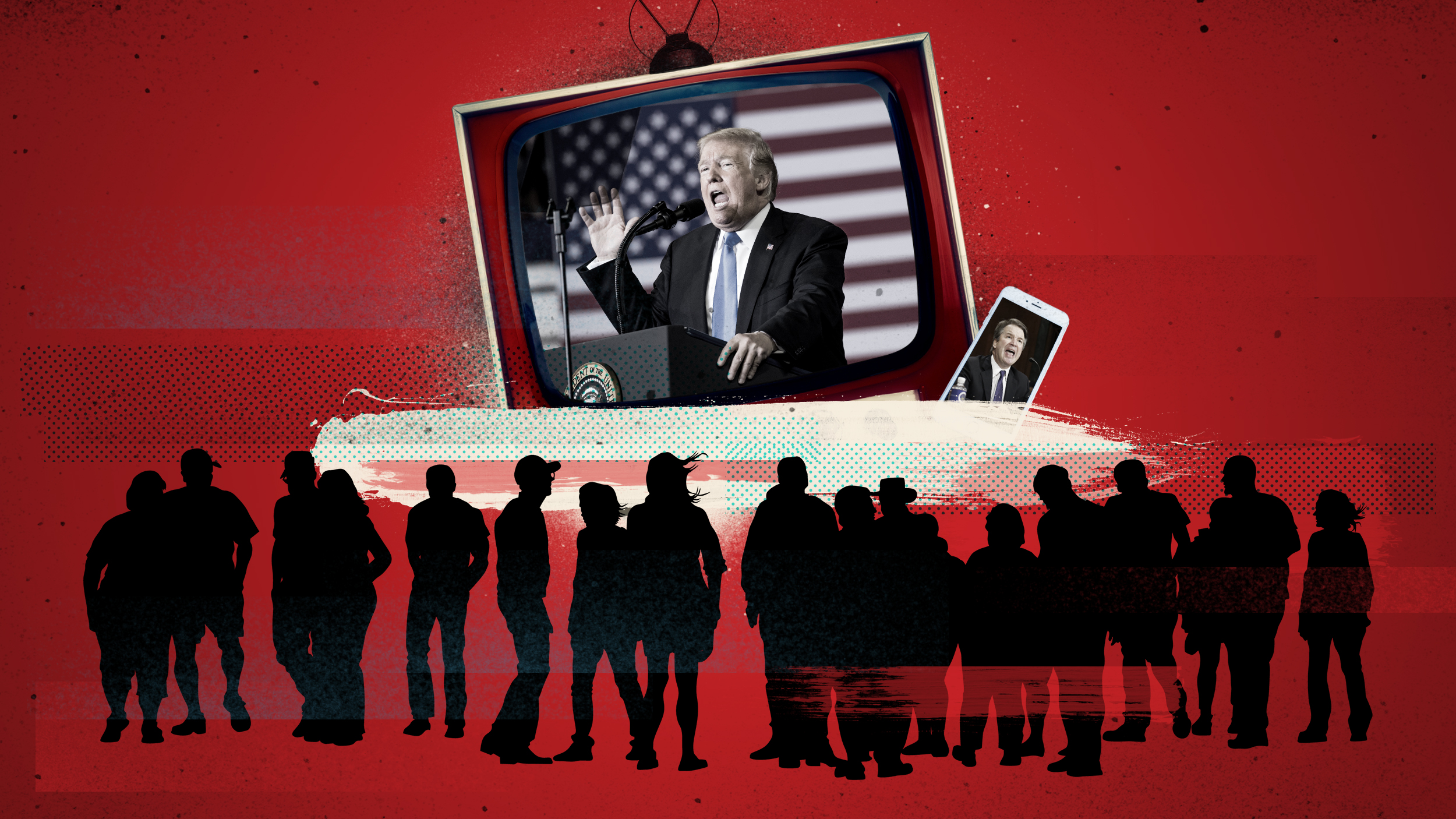How Americans Became Addicted to Cable News in the Trump Era (Column)
By Daniel D’Addario
LOS ANGELES (Variety.com) – It took a made-for-reality-TV president to get Americans addicted to television news again.
Over the year-plus of the Trump presidency, cable news has supplanted prestige dramas as the talk of the virtual water cooler, no matter your political allegiance. From the provocative media tours of James Comey and Stormy Daniels to the incendiary Senate hearings into the conduct of Judge Brett Kavanaugh, staying tuned from Rachel Maddow into Lawrence O’Donnell — or from Sean Hannity into Laura Ingraham — has replaced bingeing just one more episode of “Stranger Things” before bed.
After all, this is a presidency unlike any since Richard Nixon’s, one whose erratic hairpin turns make the news into a soap opera with enough daily developments to convert casual consumers into full-blown junkies. And its plot twists have often been delivered through television, with the president and ever-camera-ready surrogates like Sarah Huckabee Sanders and Kellyanne Conway making headlines with every appearance — not to mention the new stars surfing the wave of the Trump era (we see you, Michael Avenatti).
Once forced to stretch to find stories worth broadcasting, the 24-hour news cycle is now punctuated by a daily face-off between Sanders and the reporters she holds in contempt, neither side ceding ground but both delivering pure drama to a captivated audience. And events like the stunning day of testimony on Sept. 27 from Kavanaugh accuser Christine Blasey Ford and Kavanaugh himself are fueled by the partisan tensions and conversations around sexual assault at the heart of Trump’s America. Little wonder the nation seemed to grind to a halt to watch. Not since the scandals of the 1990s — when the stories of O.J. Simpson and, later, President Clinton during his impeachment dominated cable news — has one narrative so captured the entire nation, or one show been so inescapable on the dial. But this time, the man at the center relishes the attention.
Trump, a natural bloviator seemingly born to be behind a podium — and a keen-eyed producer schooled in keeping audiences wanting more from years of “The Apprentice” — began the process of turning the news into a suspenseful narrative from the moment he descended that gold escalator to declare his candidacy. And cable networks did the rest. After Trump was elected, both MSNBC and Fox News executed sharp pivots from the Obama era, with MSNBC on the left moving from staid policy talk to often conspiratorial rambling, and Fox News on the right moving from often conspiratorial rambling to outright denialism of any fact unflattering to the new president. And CNN’s ever-expanding panel discussions, in which any viewer on the political spectrum can see his or her point of view represented — or, more aptly, an opinion with which to vehemently disagree — have become a hallmark of this era. They’re perhaps the perfect medium for a moment when the volume at which left and right are shouting at one another grows louder by the day.
Trump’s election coincidentally came at a moment in which mass-cultural attractions, give or take a smash like “Game of Thrones,” had fallen away in favor of the niche. Or maybe it was no coincidence: The most surprising election result in any American’s lifetime might only have been such a shock in a nation whose citizens had stopped having a common culture. The news today is a nationwide preoccupation that comes as close as anything could to uniting us — into two big, divided audiences, right and left. And for each of these audiences, cable news does something that none of the remaining mass-televised spectacles, from “This Is Us” (a guilty pleasure) to NFL football (a far guiltier one) can do. It feels educational, almost virtuous.
Right now, public engagement with current affairs, should it be borne out by higher-than-usual turnout at the midterm elections, is fairly remarkable. But it’s worth wondering just what our new national pastime is really giving us. The benefit may be that dinner-table conversation across the country has shifted toward what our nation is going through and how it might be changed. The hazard is that we can watch no other story. Both sides of our political divide claim to want the story to shift and to slow its pace — the left through the neutering of Trump’s powers at the midterms and his ultimate defeat in 2020, the right through the defanging of Trump’s critics and his ultimate triumph. That so many on both sides tend to find themselves more addicted to the show than they are beholden to any policy position is a harbinger of danger, but less of Trump being more likely to win in two years than of the uneasy feeling that he’s won already.
Among so many other changes the president has wrought has been reshaping the nation’s entertainment in his own image, with himself as the star. And so many viewers don’t really want it to end.

